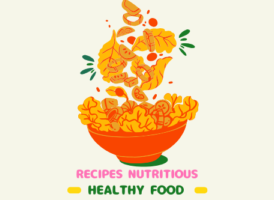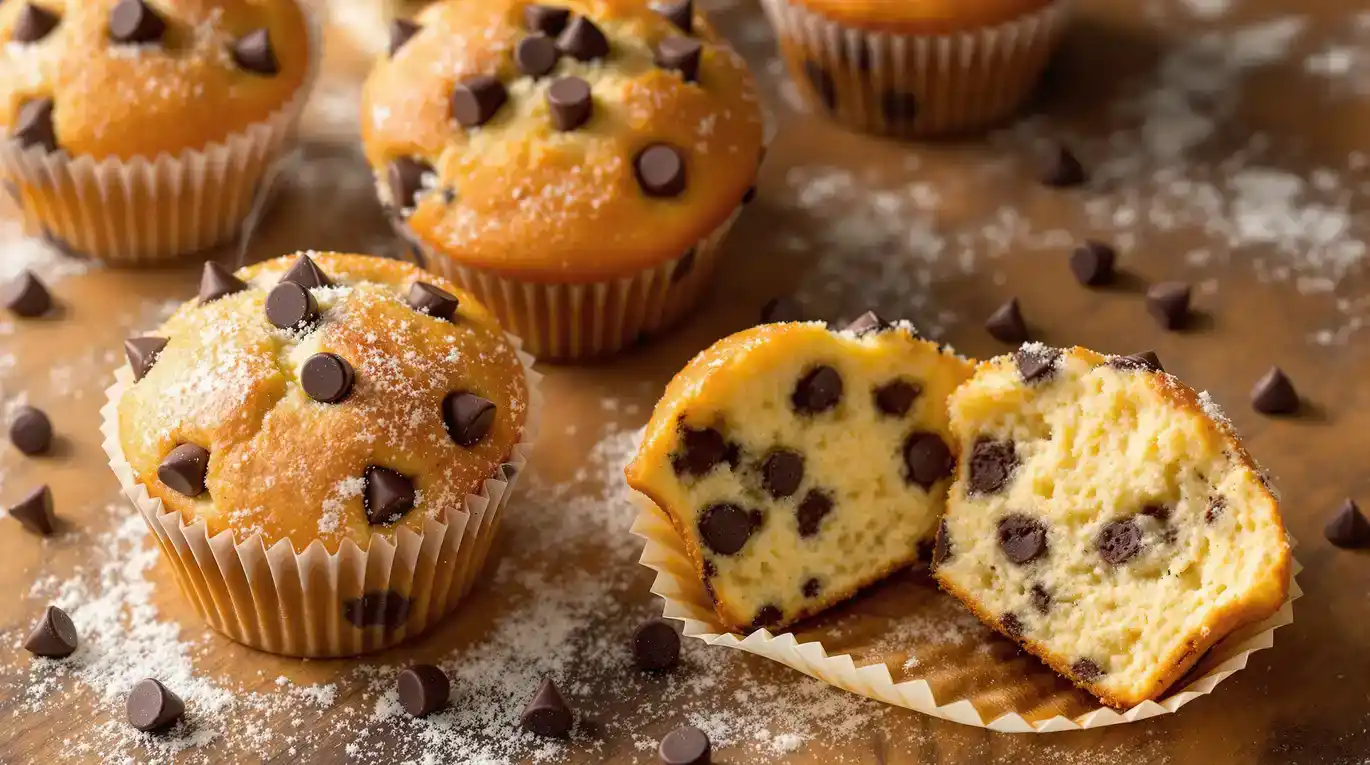Google shows more than 64 million chocolate chip muffin recipes when you search. That’s some serious competition for the perfect muffin!
Our chocolate chip muffin recipe has stood out since 2013. Readers love it, giving it a stellar 4.6-star rating across 187 reviews. The magic comes from our unique techniques. We use a special two-temperature baking method that creates tall, perfectly risen tops. A 15-minute batter rest will give an incredibly fluffy texture.
These muffins stand apart from the ordinary. Each one comes with sky-high sugared tops and perfectly moist crumb. Our special blend of sour cream and yogurt makes all the difference. You can bake 6 jumbo or 15 standard muffins that stay fresh for days – all in just 45 minutes.
Ready to become skilled at baking the perfect chocolate chip muffins? Let’s head over to the techniques that will revolutionize your baking game!

Choosing the Right Ingredients for Moist Muffins
The secret to amazing chocolate chip muffins starts with picking the right ingredients. A few key components make the difference between an average muffin and one that tastes like it’s from a professional bakery. Let’s look at what raises your homemade chocolate chip muffins to bakery-quality treats.
Why flour type matters
All-purpose flour is the foundation of most chocolate chip muffins and gives them their structure. But not all flours work the same way. Unbleached all-purpose flour creates beautifully open-textured muffins. On top of that, some bakers mix in bleached cake flour to replace half their all-purpose flour. This helps create an even more pronounced muffin top because bleached flour soaks up moisture faster and sets more quickly.
Your flour measuring technique makes a big difference. Too much flour will give you dry, crumbly muffins – that’s the mistake most people make. The quickest way to get it right is to use a kitchen scale (270-315g depending on recipe). You can also use the spoon-and-level method – just spoon the flour into your measuring cup and level it with a knife without packing it down.
Some recipes add cornstarch to the flour to make the crumb more tender. This ingredient helps break down the flour’s proteins, which creates a delicate texture that melts right in your mouth.
The role of sour cream, yogurt, and buttermilk
These acidic dairy ingredients reshape the scene from basic chocolate chip muffins into moist masterpieces.
Buttermilk is a great way to get moist muffins. The tangy flavor adds depth while the acid makes the gluten softer, which creates a tender crumb and better volume. You can make your own buttermilk by mixing 1 tablespoon of lemon juice or vinegar with a cup of milk and letting it rest for a few minutes.
Sour cream works like buttermilk to create tender, moist muffins. Many bakers call it a must-have for the best texture. A popular recipe suggests “You’ll use room temperature sour cream OR Greek yogurt to add extra moisture and tenderness”. Sour cream’s fat content makes richer muffins that stay fresh longer.
Greek yogurt works just as well as sour cream, adding similar tang and moisture. Some recipes use both buttermilk and sour cream together – buttermilk for tenderness plus sour cream for richness – to create the ultimate moist chocolate chip muffin.
The sort of thing I love about these ingredients is the science behind them. When the acid in buttermilk, yogurt, and sour cream meets baking soda, it creates tiny carbon dioxide bubbles that help muffins rise. The proteins build structure while the fats create that wonderful melt-in-your-mouth quality.
Best chocolate chips for texture and flavor
Your choice of chocolate chips substantially changes both texture and flavor in your best chocolate chip muffin recipe.
Semi-sweet chocolate chips (with at least 35% chocolate liquor) are the most popular choice for muffins. They hit the sweet spot between sweetness and rich chocolate flavor. Ghirardelli Semi-Sweet Chocolate Chips topped one taste test with their “life-changing cocoa flavor” and “velvety melt”.
Mini chocolate chips spread more evenly through the batter, so you get “lots of bits of chocolate in every single bite”. That’s why bakers often choose them over regular-sized chips or use both sizes to create different textures.
Dark chocolate chips offer deeper cocoa notes for those who want more intense flavor. Milk chocolate chips give you a sweeter, creamier experience. A test of different brands showed that chocolate quality directly affects how much the muffins “sing” – basically, how well the chocolate works with the overall flavor.
Pro bakers often save some chocolate chips to sprinkle on top of the muffin batter before baking. This trick makes them look amazing and guarantees that perfect chocolate taste in your first bite.
Pick these key ingredients carefully – the right amount of flour, moisture-rich dairy ingredients, and quality chocolate chips – and you’ll create chocolate chip muffins that are just as good as the ones from top bakeries.
Mixing the Batter: Getting the Texture Right
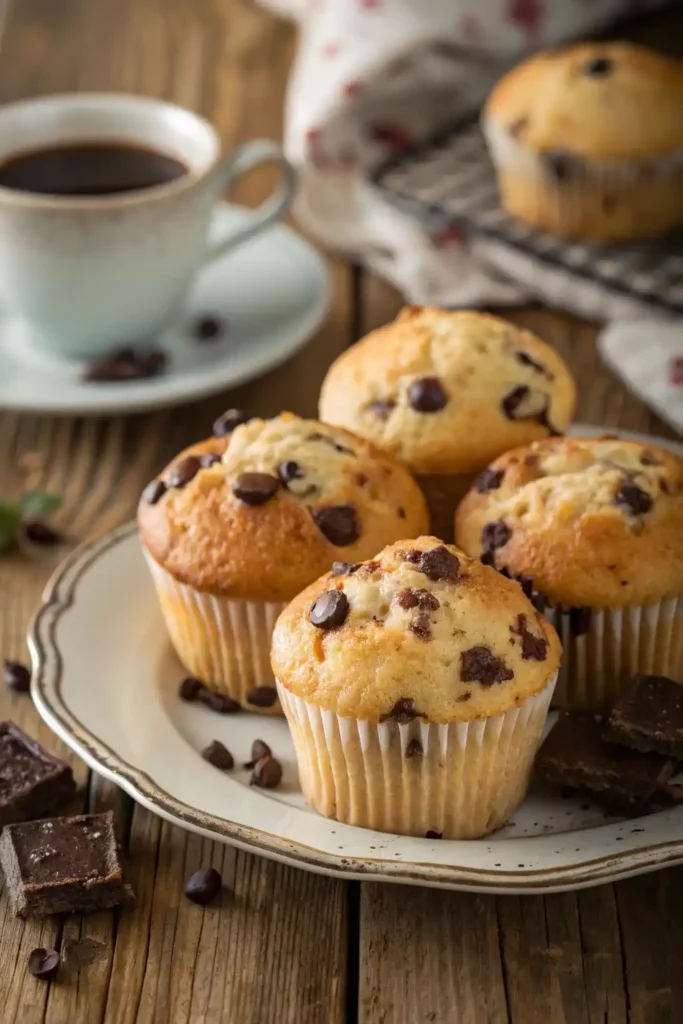
Perfect chocolate chip muffins need more than just great ingredients. The way you mix them makes all the difference in getting that bakery-style texture. Your mixing technique will affect how the muffins rise, their crumb structure, and tenderness. Let’s dive into the science of getting your muffin batter just right.
Wet vs. dry ingredient mixing tips
The quickest way to mix muffin batter is called the “muffin method.” This basic baking technique helps create light, tender muffins. Here’s how it works in three simple steps:
- Mix all dry ingredients (flour, sugar, baking powder, salt) in one bowl. Give them a good whisk for at least 20 seconds so the leavening agents spread evenly.
- Combine all wet ingredients (eggs, milk, oil/melted butter, flavorings) in a separate bowl until they blend well.
- Make a well in the middle of your dry ingredients, pour in the wet ingredients, and fold them together gently until just combined.
This separation is a vital step that lets ingredients spread evenly before mixing. Skipping this step might leave you with pockets of salt or baking soda, or eggs that haven’t mixed in properly.
Bakers often debate whether to add wet ingredients to dry or dry to wet. The recipes might tell you one way or another, but it’s more about keeping your kitchen clean than chemistry. Adding wet to dry usually creates less mess because flour won’t puff up all over your counters.
How to avoid overmixing
The sort of thing I love about muffin science is how something as simple as mixing can make or break your results. Mix too much and you’ll wake up the gluten in flour, leaving you with tough, chewy muffins instead of tender ones.
“Overmixing is a common problem with muffins and is certain to happen with an electric mixer,” warns baking experts. You’ll get the best results with just 15-20 light strokes of a spoon when you combine wet and dry ingredients.
The science behind overmixing is fascinating. Your batter develops “tunnels” – air paths running through muffins where bubbles got trapped in sheets of gluten. These tunnels show up when you’ve mixed the batter too hard.
Your muffin batter should look a bit lumpy – not smooth like cake batter. Those small lumps will disappear as they bake. Professional bakers say it best: “Stop mixing before you think you’re finished.”
Add your mix-ins (like chocolate chips) while you can still see some flour streaks in the batter. The process of folding these in will finish the mixing without overdoing it.
Room temperature ingredients: why they matter
Your ingredients’ temperature, especially eggs, dairy products, and butter, can really affect the final texture.
At room temperature (around 70°F), eggs and dairy create an emulsion that holds air. This trapped air expands during baking and gives you fluffy, light muffins. Warm ingredients also blend better, creating an even-textured batter.
“A smooth batter equals a uniformly textured baked good,” explains baking science. Cold ingredients don’t mix well and can leave you with lumpy batter and dense muffins.
Room temperature becomes extra important when your chocolate chip muffin recipe uses sour cream or yogurt. Cold dairy can make melted butter turn into small lumps, leading to uneven texture.
Here’s how to warm up ingredients quickly:
- Put eggs in warm (not hot) water for 10-15 minutes
- Pop milk or cream in the microwave for 15-20 seconds
- Cut butter into small chunks to warm faster (if using melted butter)
Remember this: if your recipe needs room temperature or melted butter, all other cold ingredients should be warm too, unless the recipe says otherwise.
These mixing techniques are the foundations of great homemade chocolate chip muffins. You’ll get the perfect mix of tender and structured muffins that rise beautifully, stay moist inside, and have that classic bakery-style dome on top.
Filling and Resting: The Secret to Tall Muffin Tops
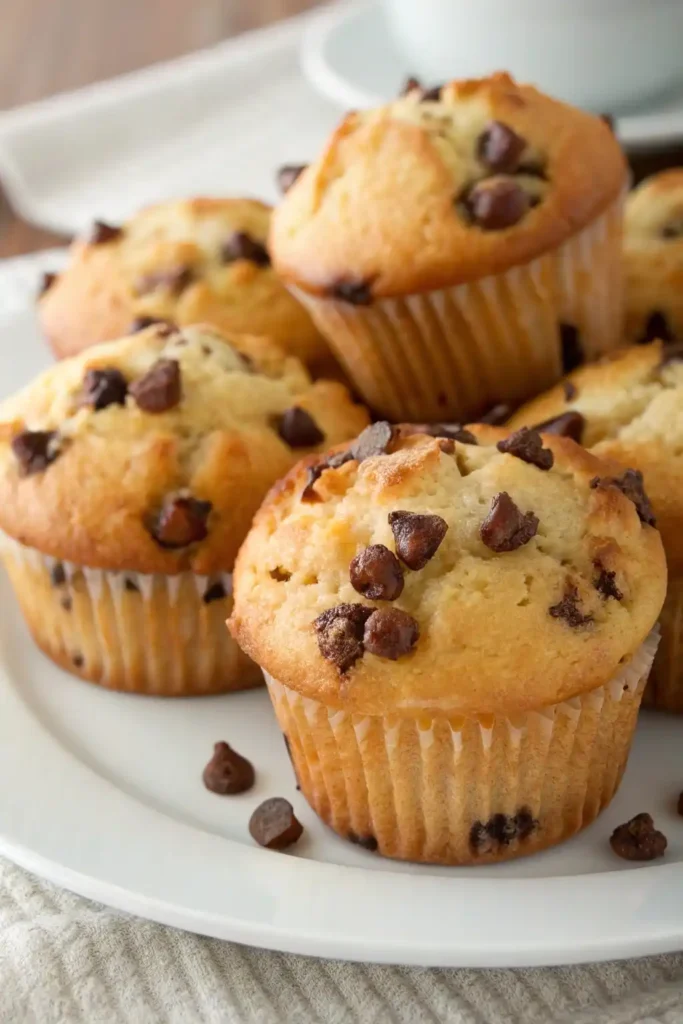
The path to those iconic bakery-style chocolate chip muffins starts well before they hit the oven. Two significant techniques that professional bakers swear by will change your homemade treats from flat and forgettable to tall and impressive. These techniques are proper filling of muffin cups and letting the batter rest.
How full should muffin cups be?
The perfect muffin top starts with the right amount of batter in each cup. Most standard recipes tell you to fill muffin cups about two-thirds to three-quarters full. This gives your batter space to rise without spilling over. But professional bakers take a bolder approach to create those coveted bakery-style domes.
You’ll need to fill your muffin cups right up to the brim to make impressive chocolate chip muffins with mountainous tops. “You can even slightly overfill for extra-tall muffins, so the batter creates a nice domed shape as it rises during baking”. This might seem risky—you might worry about overflow—but with the right thick batter, you’ll get stunning results.
These professional techniques will help you get consistent results:
- A large ice cream scoop (about 4 ounces) will give each cup the exact same amount of batter
- Picture “the most perfectly round scoop of ice cream perched atop a wafer cone” as you fill cups
- Your batter should mound slightly above the lip
Here’s a pro tip that rarely leaves bakery walls: skip every other cavity in your muffin tin. “At the bakery, we’d alternate the cups, filling every second cup and leaving the others empty. This meant that there was enough room for the muffins to have rounded tops and crusty edges without crowding into each other”. Better air circulation lets each muffin expand freely.
Why resting the batter improves rise
Letting your batter rest before baking might be the best-kept secret in muffin making. This simple step makes a big difference in texture and height.
Rested muffin batter gives flour’s starches more time to soak up moisture from eggs and liquid ingredients. The starches swell and create a thicker, stronger batter. This thicker mixture holds its shape better during baking and produces taller muffins with well-defined domes.
“As muffin batter rests, the starches in the flour have more time to absorb the moisture from the eggs and liquid in the batter,” explains one professional baker. “As a result, the starches swell, giving the batter a thicker, more robust consistency”.
You can rest your batter two ways:
- Room temperature rest: Let the batter sit at room temperature for 1 hour
- Overnight refrigeration: Cover and chill the batter in the refrigerator for up to 24-48 hours
Bakery experts say resting offers more benefits:
- Better flavor as ingredients blend together
- Better texture with even moisture distribution
- Less sticky batter that’s easier to portion
- More consistent results
Your recipe should use double-acting baking powder, which activates both when mixed with wet ingredients and when heated. This helps your batter rise properly even after refrigeration.
This method makes morning baking a breeze. Mix your chocolate chip muffin batter the night before, pop it in the fridge, and bake fresh muffins in the morning without any hassle.
Baking Techniques for Perfect Rise and Crust
Your chocolate chip muffins become something special in the oven, even with the right ingredients and mixing. The baking process gives your muffins their final height and texture. These techniques will help you make muffins that taste like they’re from a professional bakery.
The two-temperature baking method
Professional bakers use a smart temperature trick that most home bakers don’t know about. They start hot and finish cooler. This approach helps create muffins with the perfect rise and texture.
Don’t stick to a steady 350°F throughout. Start baking at 425°F for just 5 minutes, then lower the temperature to 350°F for the remaining 15-18 minutes. The original blast of high heat serves two vital purposes:
- It kicks the baking powder into action faster, making the batter rise quickly to create those tall, domed tops you see in bakery muffins.
- It sets the muffin’s outer surface early, which develops into a beautiful golden-brown crust with a light crunch.
This two-phase method protects against overcooking. The lower temperature in the second phase keeps the outside from getting too dark or dry while the inside bakes perfectly soft and tender.
Your muffin tin should sit in the top third of your oven [link_1] where heat moves around better. This method works because leavening agents react to heat in a specific way—the quick rise at the start builds structure that keeps the muffins tall throughout baking.
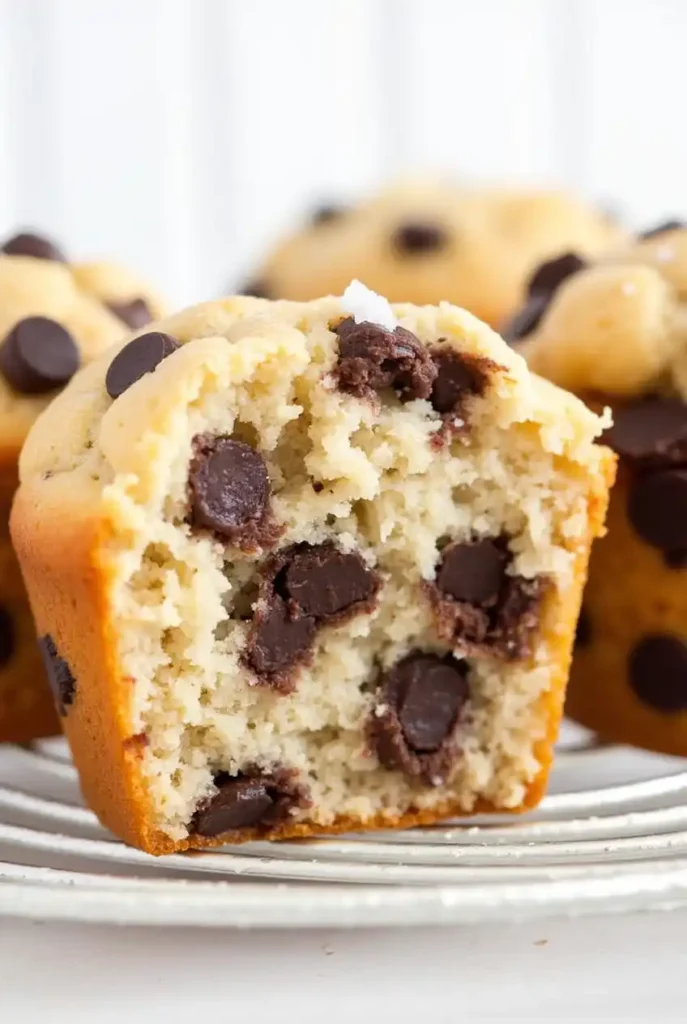
How to get a golden, crackly top
That sparkly, crackly crust on professional chocolate chip muffins comes from specific techniques you can use at home.
The high-temperature start builds the foundation for a beautiful crust. You can get that classic bakery finish by sprinkling coarse sugar on your muffin batter [link_2] right before baking. Professional bakers suggest using either:
- Raw sugar (also called turbinado sugar)
- Coarse sugar crystals or sparkling sugar
These bigger sugar crystals don’t melt completely during baking. They create that sweet crunch and sparkly look that makes muffins look professional. A light brush of melted butter on top before adding sugar adds extra richness.
Your oven’s convection setting can help too. The fan spreads heat evenly around each muffin, which leads to better browning and an even crackly top. Just remember to lower your baking temperature a bit when using convection to avoid overbaking.
Filling your muffin tins to the top, using the two-temperature method, and adding coarse sugar creates perfect bakery-style chocolate chip muffins. These simple techniques help you make spectacular treats without any special equipment.
Troubleshooting Common Muffin Problems
Chocolate chip muffins can challenge even the most experienced bakers. Learning about common problems and their solutions will help you perfect your recipe and avoid disappointment.
Why your muffins are dry
Several baking mistakes can lead to dry, crumbly muffins. Inaccurate flour measurement stands out as a major culprit. Direct “scooping” of flour from its container compresses it, adding more than your recipe needs. The right way involves spooning flour into your measuring cup and leveling it with a knife.
The amount of fat makes a huge difference in your muffin’s moisture. Your muffins will turn out dry if you use insufficient butter or oil, or switch to low-fat options. A common mix-up that halves the fat content happens when bakers mistake one stick of butter for 1 cup instead of its actual 1/2 cup measure.
Proper measurement combines with the right baking time. A toothpick inserted into the center should come out clean or show just a few moist crumbs to test if they’re done. Let the muffins cool in the pan for 5 minutes, then remove them to prevent moisture loss from leftover heat.
What causes sunken centers
Muffins with collapsed centers can ruin your day. Cell structure fails to set in underbaked muffins, causing air pockets from leavening to collapse. The toothpick test should go deep into the center, not just the surface, to check doneness.
Your muffins might sink due to leavening problems. Old or poorly stored baking powder loses its power. The ratio of leavening to flour must be right – use 1 teaspoon of leavening for each cup of flour.
Temperature accuracy plays a crucial role. Most home ovens deviate by 15-25 degrees or more. An oven thermometer ensures your chocolate chip muffins bake at the exact temperature needed for proper structure.
How to fix uneven baking
Simple changes can fix unevenly browned or partially baked muffins. A fully preheated oven prevents excess top heat and undercooked bottoms.
Your choice of baking pan affects the results. Dark, dull pans absorb more heat and create darker browning. Shiny pans reflect heat, producing lighter browning. Moving your pan to a lower rack position might help if muffin bottoms aren’t cooking well.
The solution to uneven baking is simple. Keep the oven door closed during baking to maintain steady heat. Wait until muffins have set before rotating the pan halfway through baking to handle hot spots without causing collapse.
Flavor Variations and Add-In Ideas
The simple chocolate chip muffin recipe opens up a world of creative possibilities. Your standard chocolate chip muffin becomes a blank canvas that lets you create countless delicious breakfast variations.
Swapping chocolate chips for other mix-ins
You can easily swap classic semi-sweet chocolate chips with many alternatives in your favorite muffin recipe. Fresh or frozen berries like blueberries, blackberries, and raspberries add natural sweetness with bursts of flavor. Diced mangoes bring a tropical twist and need less sugar.
Protein-rich nuts add great texture. Here are some popular choices:
- Chopped walnuts or pecans add earthiness
- Sliced almonds give a subtle crunch
- Toasted macadamia nuts bring rich buttery flavor
Dried fruits blend beautifully into the mix. Cranberries, raisins, and coconut flakes work well alone or with chocolate chips. More adventurous bakers might enjoy these combinations:
- White chocolate with raspberries
- Cinnamon chips with chopped pecans
- Peanut butter chips add a nutty twist
Adding spices or extracts for depth
Spices can change your chocolate chip muffins’ flavor profile. Detailed bake-offs show that cinnamon pairs well with chocolate, though some tasters say it shifts away from the “classic” taste. Cardamom brings a citrusy-mint quality that works well with both blueberries and dark chocolate.
Vanilla extract builds the foundation for most muffin recipes. Almond, lemon, or orange extracts offer fresh alternatives. Fresh orange or lemon zest adds bright notes without extra moisture.
Making gluten-free or dairy-free versions
You can make chocolate chip muffins everyone can enjoy. Gluten-free versions work best with quality flour blends using rice flour, tapioca starch, and potato starch. A mix of gluten-free all-purpose and almond flour creates moist, delicious results.
Dairy-free bakers can use vegetable oil, coconut oil, or vegan butter instead of regular butter. Almond milk, coconut milk, or oat milk work perfectly in place of dairy. Soy milk shines in vegan recipes because its higher protein content helps muffins rise better and stay fluffy.

Conclusion
Making perfect chocolate chip muffins needs both skill and attention to detail. Quality ingredients and proper technique will help you create bakery-style treats right in your kitchen.
The best results come from carefully measured flour, rich dairy ingredients, and premium chocolate chips. You’ll get tender, fluffy muffins when you become skilled at the muffin method without overmixing. Your muffins will have those beautiful domed tops when you fill the cups completely and let the batter rest.
A two-temperature baking approach creates muffins with golden, crackly crusts that look amazing. Your confidence will grow as you learn to handle common baking issues and try different variations.
These methods work perfectly each time, whether you stick to classic chocolate chip or try new flavors and mix-ins. Check out more recipes and meals ideas in our blog “recipesnutritious.com” to discover more delicious baking options.
The science behind baking and creative adaptations are the foundations of great muffins. You now have all the secrets to bake perfect chocolate chip muffins that will make your kitchen smell just like a professional bakery.
FAQs
Q1. What’s the secret to achieving tall, bakery-style muffin tops? The key is to fill muffin cups to the brim and use a two-temperature baking method. Start baking at 425°F for 5 minutes, then reduce to 350°F for the remaining time. This initial high heat helps create that coveted domed top.
Q2. How can I prevent my chocolate chip muffins from becoming dry? To keep muffins moist, accurately measure flour by spooning it into the measuring cup and leveling off. Use the right amount of fat (butter or oil) and avoid overbaking. Adding ingredients like sour cream or yogurt can also help retain moisture.
Q3. Why should I let my muffin batter rest before baking? Resting the batter allows the flour to absorb more moisture, resulting in a thicker consistency. This leads to taller muffins with better-defined domes and improved texture. You can rest the batter at room temperature for an hour or refrigerate overnight.
Q4. Can I make gluten-free or dairy-free chocolate chip muffins? Yes, you can! For gluten-free muffins, use a quality gluten-free flour blend, possibly combined with almond flour. For dairy-free versions, substitute butter with vegetable oil or vegan butter, and use plant-based milk alternatives like almond or oat milk.
Q5. What are some creative mix-ins I can use instead of chocolate chips? You can experiment with various add-ins like fresh or frozen berries, chopped nuts, dried fruits, or even unexpected combinations like white chocolate with raspberries or cinnamon chips with pecans. Spices and extracts can also add depth to your muffin flavors.
